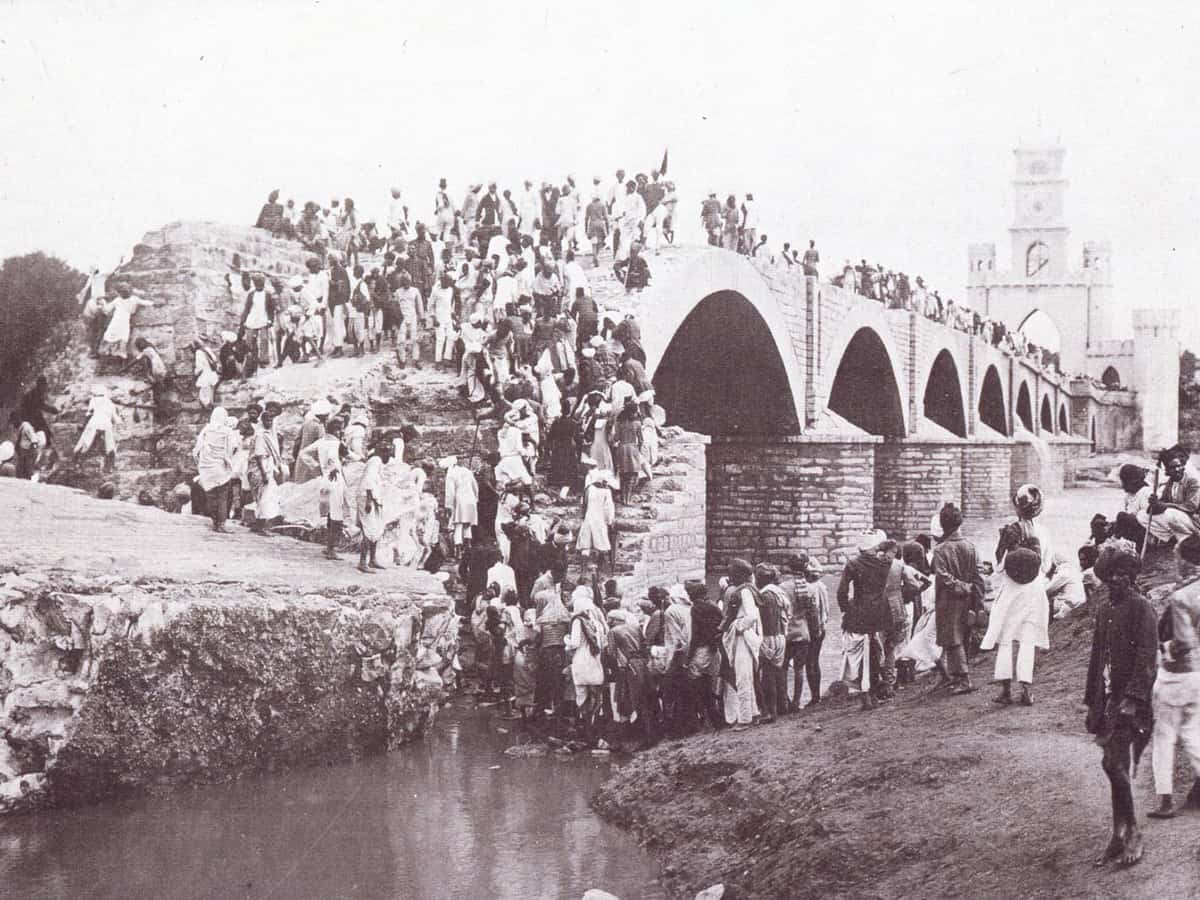
Hyderabad: If there is any month to choose from in a year that is tragic in Hyderabad’s history, it is September. Albeit not in the same year, the month has historically been marked with some of the worst tragedies that have befallen our city.
On September 28 in 1908, the devastating 1908 Musi river floods hit Hyderabad, in which an estimated (reportedly) 15000 people died. It was followed by annexation of the erstwhile princely state of Hyderabad to India on September 17, 1948. And prior to both of these events, September 22 in 1687 was the tragic day when the kingdom of Golconda fell to the Mughal king Aurangzeb, who razed Hyderabad to the ground.
The trio of events in September make it the month of tragedies for Hyderabad, as it marks different events all of which devastated the city in different ways. All the more reason for us to understand the events better and to not forget our important history.
Operation Polo: September 17, 1948 and Hyderabad’s annexation
An event that was forgotten for decades or at least spoken of only in hushes as it was conveniently hidden, Operation Polo today has become a hotly contested historical event politically in Telangana and Hyderabad today. It marks the date when the last Nizam of Hyderabad Mir Osman Ali Khan had his state formally annexed to India after a five-day military action called Operation Polo.
The issue is complex, as it follows the days post independence wherein a handful of princely states including Hyderabad refusing to join India and deciding to stay independent. The state was one of the largest and bang in the middle of India. It was a multi-lingual state which included Telangana, and parts of Maharashtra and Karnataka.
Moreover, the Nizam was also dealing with a communist-backed peasant rebellion in Telangana which took over a good chunk of the rural landscape. It was also preceded by violence faced by many, especially Hindus, at the hands of the militia Razakars run by former MIM president Qasim Razvi. In all of this, his decision to stay independent eventually turned into a disaster with the Indian government sending its army, and also resulting in the deaths of thousands of Muslims who were killed in communal violence in the aftermath.
September 22, 1687 and the fall of Golconda
Among the many things we fail to remember often are our founders and the Qutb Shahi dynasty of Golconda that founded Hyderabad. While the city’s founder Muhammed Quli Qutb Shah is at least often remembered, others of his dynasty are often forgotten when we talk about the city and its people.
The least remembered in fact is the last Qutb Shahi king Sultan Abul Hasan Tana Shah (1672-1687), who in fact bore the brunt of the Mughal attack led by Aurangzeb in 1687 for nearly nine months before losing to the north Indian dynasty. The Mughal armies in fact began their attack in January of 1687 and Aurangzeb was almost about to lose the war as part of his armies had also been washed away in September due to rains and floods.
The historic Golconda fort in fact stood the might of the Mughal empire, and never caved in. However, the Mughals finally had their way in after bribing one of the fort’s gatekeepers named Abdullah Khan Panni. That allowed them to finally enter and lay siege and take Abul Hasan captive. Had the Mughals lost the war with Golconda, then history would have been very different.

Musi river floods of September 28, 1908
If there is any historic natural calamity that changed Hyderabad forever, and for some good, then it is the 1908 Musi river floods that devastated the city between 28 and 29 September. The heavy rains between the two dates saw rainfall reaching a staggering 8 to nearly 13 inches in those two dates, resulting in over 200 water bodies flooding the city (Visveswaraya).
In the aftermath of the floods, the last Nizam of Hyderabad Osman Ali Khan (1911-48) began the modernisation of Hyderabad and also took steps to flood proof the city. Soon after other public utility buildings were also built like the High Court, Osmania and Unani Hospitals, Moazzam Jahi market, Osmania University etc among others.
Osman Sagar and Himayat Sagar lakes were also eventually built to protect the city from the Musi river’s wrath. However, both have today become a threat to citizens thanks to encroachments or illegal settlements.



